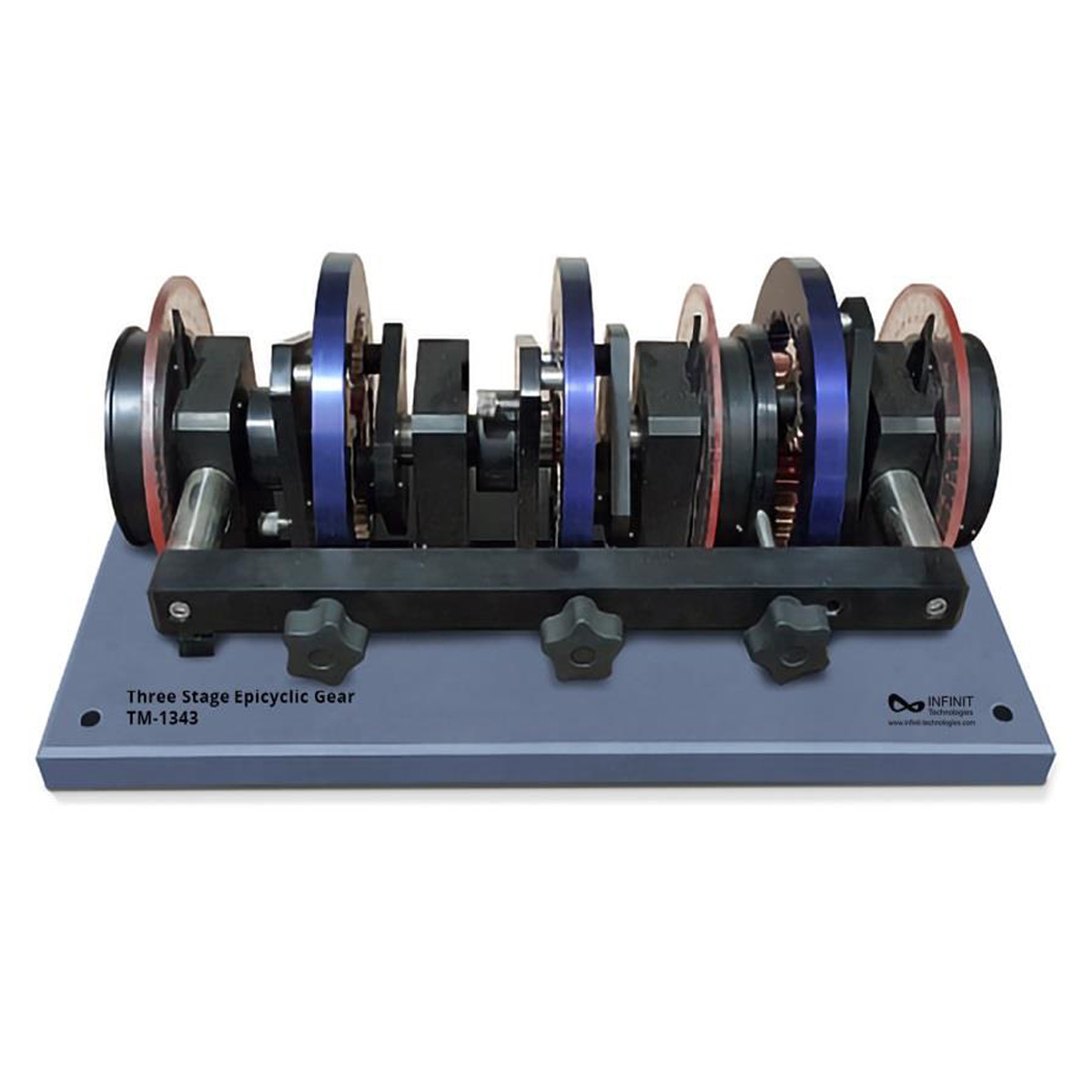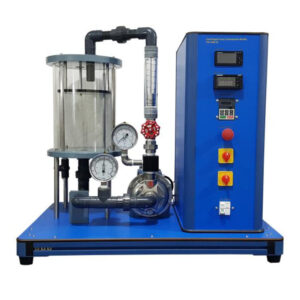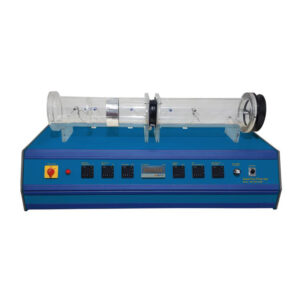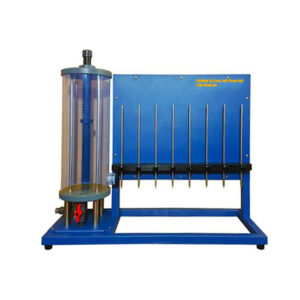The most important elements of an automatic transmission are one or several planetary gears (or epicyclic gears), clutch packs, band brakes and pilot valves. Epicyclic gears perform several functions:
- Coupling between input and output shafts.
- At low velocities, it generates high torque at the output shaft.
- At high velocities, it reduces the torque at the output shaft.
- Rotation direction inversion between the input and output shafts.
- The Epicyclic Gear Unit (3 elements), consists of three coupled epicyclic gears sets. It will allow the students to carry out experiments of different gear ratios, as well as the torque conversions. The epicyclic gears unit are the same and they consist of the following elements:
- Sun gears
- Satellite gears set
- Ring
The unit has two graduated discs located at the input and output shafts, which will allow to check the velocity and torqu ratios according to the application of the different brakes. The power arrives to the epicyclic gears through the sun gears.




